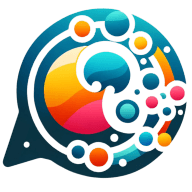11 Ways to Personalize Interactions Using a CRM
In today's competitive business landscape, personalization is key to standing out and building lasting customer relationships. This article explores expert-backed strategies for leveraging your CRM to create tailored, meaningful interactions with clients and supporters. From predicting customer habits to honoring original connection points, these insights will help you transform your CRM into a powerful tool for personalized engagement.
- Flag Early Signs of Customer Disengagement
- Address Operational Milestones Proactively
- Capture Personal Details for Meaningful Conversations
- Tailor Onboarding Based on Initial Interests
- Shape Interactions Around Individual Stories
- Predict and Act on Customer Habits
- Guide Outreach with Health-Related Milestones
- Balance Automated Onboarding with Personal Touch
- Honor Original Connection Points with Supporters
- Remember Non-Business Details about Clients
- Segment Audience Based on Browsing Behavior
Flag Early Signs of Customer Disengagement
One tactic we use is combining support and product usage data in our CRM to catch early signs of disengagement. If usage drops and there's no support activity, it often means a customer is quietly struggling.
In one case, a longtime client stopped using a key feature and went quiet. Our CRM flagged the pattern, and the customer success team reached out with a short, relevant message. They had run into a bug but didn't report it. We helped them quickly, and a few months later, they even upgraded.
Personalization isn't just about names or segments. Timing is just as important. Reaching out when it actually matters is what makes the difference. You don't need complex logic for that, just the right signals and a bit of structure.

Address Operational Milestones Proactively
For a long time, CRM personalization felt like a simple product catalog. We would use a first name tag, but it did nothing to build trust or connect with customers on a personal level. We were talking at our customers, not with them.
The one strategy we use is to leverage the CRM to track and proactively address operational milestones. The role a strategic mindset has played in shaping our brand is simple: it has given us a platform to show, not just tell. Our core brand identity is based on the idea that we are a partner to our customers, not just a vendor.
A successful example is implementing a system that flags customers who bought a specific OEM Cummins Turbocharger and whose purchase date falls 10 days before the projected end of the 12-month warranty period. This triggers a personalized message offering a free operational check-up, not a sales pitch. The focus isn't on selling a new part; it's on celebrating the customer's heavy-duty uptime.
This has been incredibly effective. Our brand is now defined by the quality of our customers' success, which is a much more authentic way to build a brand. The interaction is no longer a broadcast channel for sales; it's a community of experts, and we're just the host.
My advice is that you have to stop thinking of CRM personalization as a way to promote your product and start thinking of it as a platform to celebrate your customers' operational success. Your brand is not what you say it is; it's what your customers say it is.

Capture Personal Details for Meaningful Conversations
One of the most effective strategies is using detailed client profiles inside our CRM that go beyond just the basics of name, phone number, and email. I make a point of capturing personal details, such as children's names, favorite neighborhoods, timelines, or even a passing comment about a dream kitchen. These details become part of the notes that automatically pop up before I make a call or send a follow-up.
For example, I had a client who mentioned early on that their daughter loved riding her bike and that having access to safe bike paths was important. Months later, when a property came up near one of Vancouver's best cycling routes, I sent it to them with a note saying, "I remembered you mentioned your daughter loves biking; this one might be a fit." They were blown away that I'd recalled something so personal, and it immediately built trust.
The CRM made it easy because the system prompts me with that context before I reach out. It turns a standard follow-up into a meaningful conversation, and that's what turns clients into long-term relationships.

Tailor Onboarding Based on Initial Interests
One strategy I've found effective for personalizing customer interactions is segmenting users based on their initial behavior and interests when they first engage with our platform. We track which features potential customers explore during their first visits and use that data to tailor our follow-up communications specifically to their demonstrated interests. For example, when we noticed customers registering interest in our time management tools, we created customized email onboarding guides focused specifically on those features rather than overwhelming them with information about our entire suite of products. This targeted approach significantly improved our engagement rates because customers received information that was immediately relevant to solving their specific needs. The personalization made customers feel understood from the start of their journey with us, which built stronger relationships from day one.
Shape Interactions Around Individual Stories
At Legacy Online School, we've understood that style in a CRM isn't just about inserting someone's first name somewhere. Through practice, our most effective strategy has been to consider each parent or student journey as a living story and not just a static profile.
We tag families by grade level or by location, but we also tag families based on what really matters to them. For example, are they looking for flexibility because their child is a competitive athlete? Or, are they with us because they struggled in a traditional in-person setting? With this context, we are able to shape every interaction in a way that feels less like an impersonal follow-up and instead feels like an ongoing conversation that remembers where they last interacted.
One tangible example relates to a family who started with us after their daughter was pursuing ballet at an elite level. Instead of sending those families the standard back-to-school communications, our system generated personalized messages about the choreography related to managing a rigorous training schedule with academics, along with stories related to other students who had engaged in both too. Later on, the mother told us it felt like we really saw her daughter as a person and not just a registration.
That is the heart of it. Technology helps us scale, but the strategy is simple. Don't let the system flatten the human story. If you can build your CRM around empathy, families stop feeling like customers and start feeling like partners in the same mission.

Predict and Act on Customer Habits
We use our CRM to personalize service by tracking each customer's patterns instead of just their past visits. For instance, if we notice a homeowner usually schedules mosquito treatments right before hosting outdoor events, we'll proactively reach out a few weeks before summer holidays with a reminder. It feels thoughtful instead of salesy because it's based on what we already know about their habits.
One example that stands out is a customer who hosts a big Fourth of July cookout every year. Last June, we sent a quick message saying, "Want us to get the yard ready before the party?" She laughed and said we remembered better than her husband did. Now she's on a recurring plan — not because we pushed it, but because the service felt personal. Predictive personalization has been one of the most effective ways we've strengthened relationships while maintaining genuine outreach.

Guide Outreach with Health-Related Milestones
We rely on health-related milestones within our CRM to guide personalized outreach. Instead of sending uniform reminders, we flag patients who are approaching the end of a prescription cycle or reaching key dates for preventive care. For example, when diabetic patients near the three-month mark of insulin use, our system triggers a message that not only reminds them about refills but also offers a quick check-in with a pharmacist to review dosage and lifestyle adjustments. This small adjustment shifted communication from transactional to supportive. Engagement rates for these milestone-based messages were nearly double those of standard reminders, and patients expressed greater trust in follow-up surveys. Personalization worked because it respected individual timelines and made care feel continuous rather than episodic.

Balance Automated Onboarding with Personal Touch
We implement a two-step approach to personalization within our CRM, beginning with segmented email sequences for efficient onboarding followed by personalized outreach. Once clients complete the initial automated process, I make it a priority to personally connect with them through custom notes that specifically reference their brand goals and objectives. This balanced strategy allows us to scale our customer interactions while still maintaining the personal touch that builds meaningful relationships. The feedback from clients has been overwhelmingly positive, as they appreciate both the streamlined onboarding process and the thoughtful personalized follow-up.

Honor Original Connection Points with Supporters
One effective strategy has been tagging contacts in the CRM by both their type of involvement and the stories that resonated most with them. Instead of limiting segmentation to donor levels or event participation, we track whether someone engaged first through education, family support, or a specific campaign. This detail allows communication to feel less generic and more aligned with what initially drew them in.
For example, supporters who first connected through a back-to-school drive receive follow-up updates on children's educational progress and related opportunities to give. When one such group was invited to sponsor tutoring sessions, the response rate was significantly higher than in broad appeals. The personalization worked because the CRM helped us honor the original connection point, showing that we remembered not just the donation but the motivation behind it.

Remember Non-Business Details about Clients
A roofing company doesn't concern itself with "personalization metrics" within a complex CRM. The most effective way we personalize interactions is by ensuring we record and remember a non-roofing detail that demonstrates to the client that we view them as individuals, not just a job number.
The strategy is straightforward and dependable. After each job, my office manager adds a brief note to our job file about something personal—such as the client's dog's name, the color of their front door, or their plans for a major backyard renovation. This is our "personalization strategy," and it serves as our most valuable sales tool for future work.
We employ this strategy successfully when we contact the client a year later for a follow-up. We initiate the conversation with, "How is your new roof holding up? And how is Buddy the dog doing?" That single personal detail immediately puts them at ease. It demonstrates that we listened, that we remember them, and that we are a local business that genuinely cares about more than just the payment.
The key lesson is that personal details are the most valuable data you can collect. My advice is to stop using technology solely to track transactions. Utilize simple systems to capture those human elements, because a client will always choose and refer the contractor who remembers them as a person.
Segment Audience Based on Browsing Behavior
One strategy I consistently implement is audience segmentation based on customer interactions and browsing behavior within our CRM system. For a recent client campaign, we analyzed their customer data and created multiple tailored email versions with personalized subject lines, content, and targeted resources specific to each segment's interests. This approach allowed us to deliver truly relevant information rather than generic messaging to everyone. The results were compelling, with significant improvements in open rates, click-through rates, and ultimately more meaningful customer responses.




